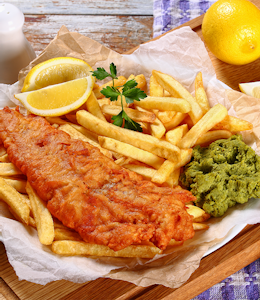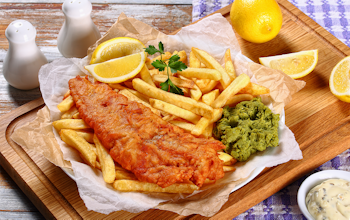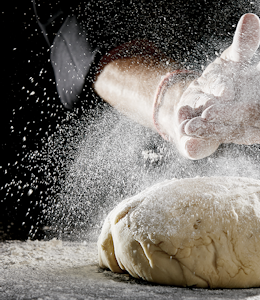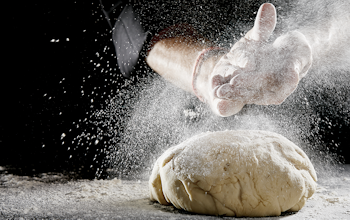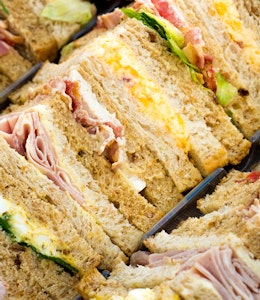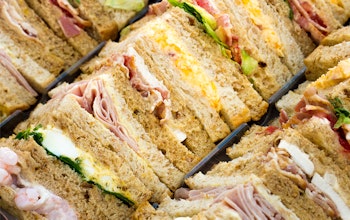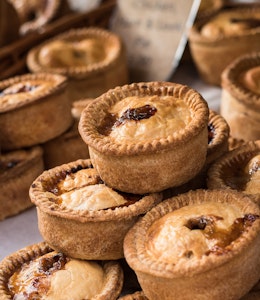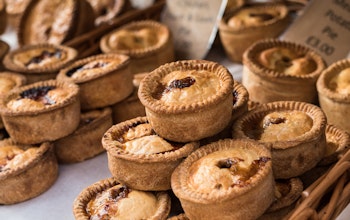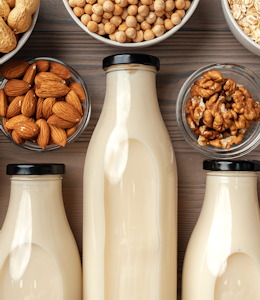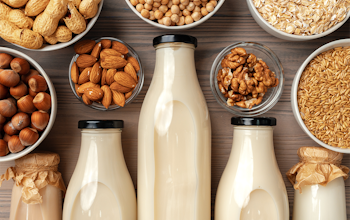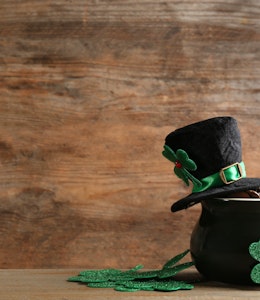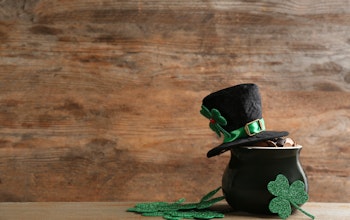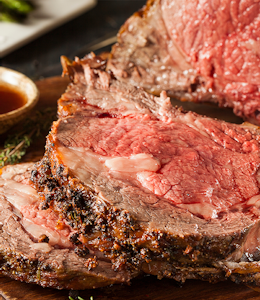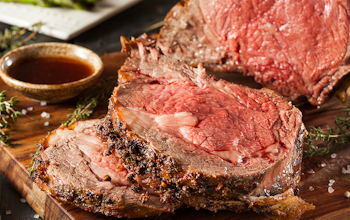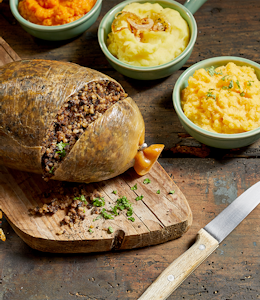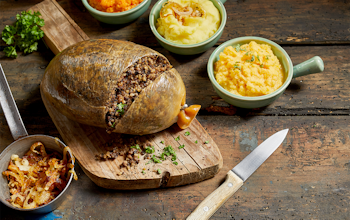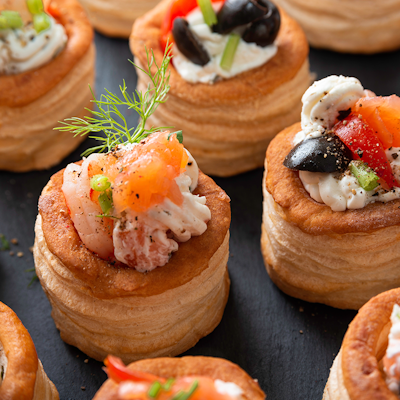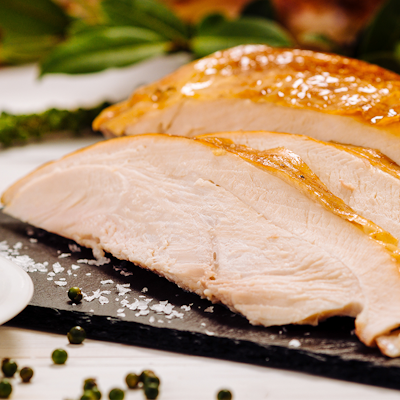Top tips for pub food classics
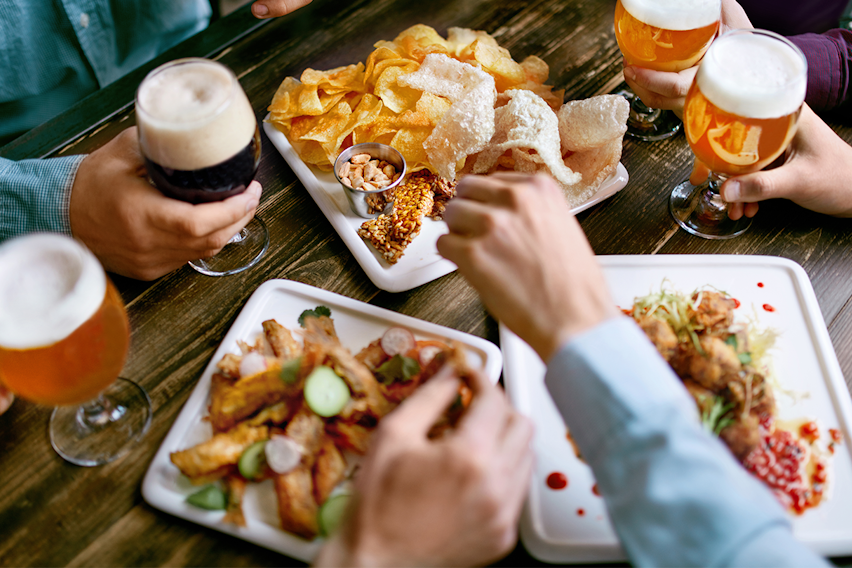
As national cuisine goes it’s a big one, but what is the most popular pub food? We’ve rounded up the superstars of a traditional pub food menu, top tips for making them and some easy swaps for different diets…
These are the pub food classics:
- Scotch eggs
- Fish & chips
- French onion soup
- Steak & ale pie
- Salmon fishcakes
- Fish finger sandwich
- Pork pie
- Sausage & mash
- Shepherds pie
- Colcannon
Now let’s find out more about them, including some top tips for making yours stand out...
Scotch egg
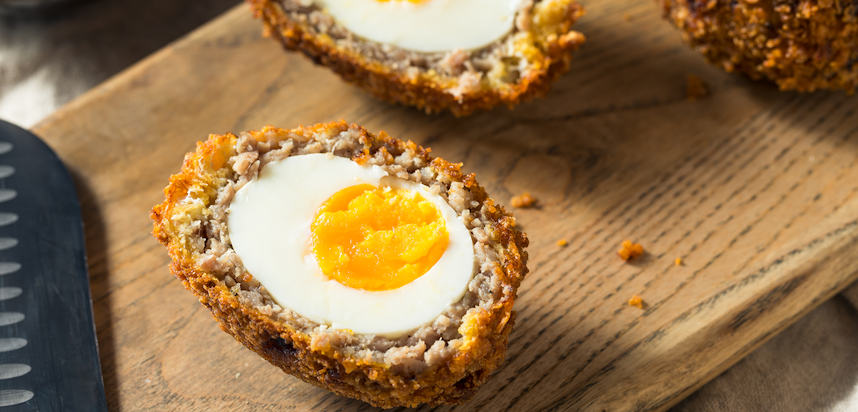
What are scotch eggs?
Scotch eggs are a British snack consisting of a boiled egg wrapped in sausage meat and coated in breadcrumbs. The beginnings of the scotch egg are disputed, with some sources claiming they were invented at the London department store Fortnum & Mason in 1738, and a later publication about the food of Yorkshire citing Whitby as the place of origin.
Scotch eggs are made by hard (or soft) boiling an egg, coating it in a mixture of sausagemeat and seasonings, flouring and brushing with an egg wash before covering with breadcrumbs and deep frying or baking.
Though usually eaten as a snack, scotch eggs can be substantial and accompanied by salad or chips as a meal.
Scotch egg top tip
When selecting eggs to make your scotch eggs, go for those that are slightly older - they’ve had time to develop air between the shell and the eggshell and the egg white and are therefore easier to peel once boiled than fresh eggs.
Allergy alert!
Eggs, one of the 14 major food allergens are a main component of Scotch eggs, and wheat flour (a Cereal containing Gluten) is a main ingredient in the breadcrumb coating. Some recipes may contain other allergen ingredients such as Celery or Mustard.
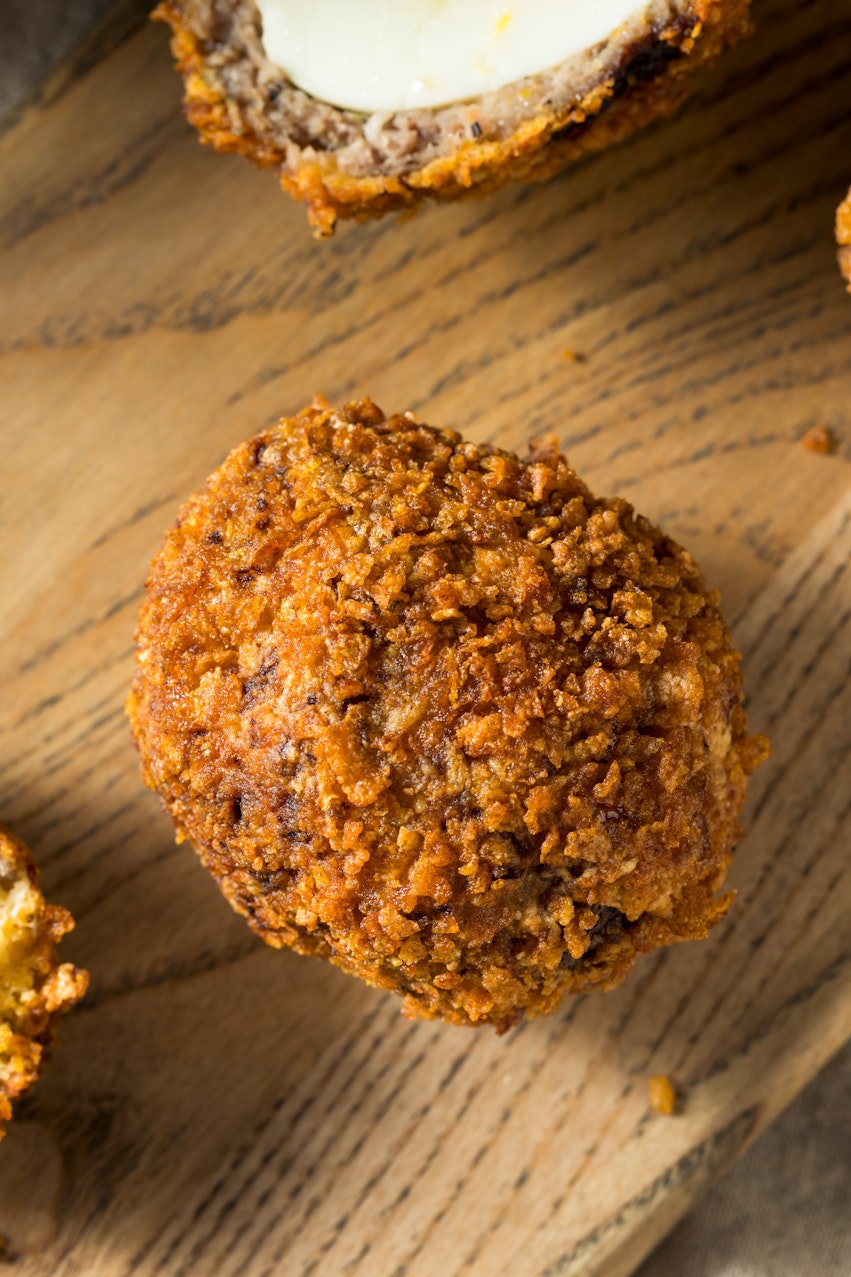
Dietary alternatives
It’s easy to make a vegetarian version of a scotch egg - simply replace the sausage meat layer with falafel, or cheese mashed together with a soft vegetable such as peas or potato.
Those with Coeliac disease or a gluten allergy can use gluten-free flour and bread for the outer layer.
Fish & chips
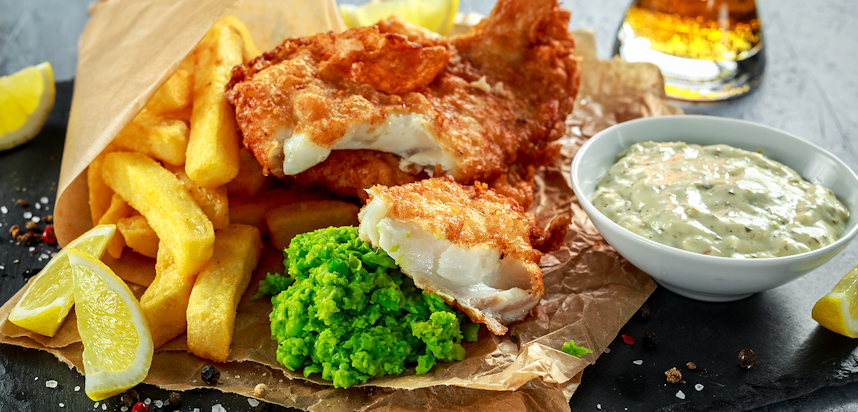
What is fish & chips?
Fish & chips is arguably the UK’s most famous dish, consisting of flaky white fish (most commonly cod or haddock) coated in a flour-based batter and deep fried till crispy and accompanied by fried, chipped potatoes.
Though now frequently served in restaurants and pubs, fish & chips originated as a takeaway dish, with the country’s first chip shops opening in the 1860s and quickly booming in quantity and popularity.
The dish’s status was cemented after being safeguarded by the government in the World Wars, and was one of the few foods not rationed.
Fish & chips top tip
After soaking or par-boiling your cut potatoes (and allowing to cool), pat the moisture out of them with some kitchen roll or a paper towel before frying. The drier the chip the crispier it will become once in the hot oil.
Allergy alert!
Fish is one of the 14 major food allergens. The flour used for batter is typically made from wheat, a Cereal containing Gluten. Though not always coated with batter, even chips are likely to contain wheat via cross-contamination.
Dietary alternatives
Gluten-free flour can be used for batter for those with Coeliac Disease or a gluten allergy or intolerance, and you can add sparkling water to create the “beer batter” effect (Beer is used for getting air into the batter and making it crispy, something the bubbles in carbonated water can also do).
Quorn or seitan can be battered as the main component of the dish for vegans or vegetarians, and white potato swapped out for sweet potato chips as a healthier option for those on a lower GI diet.
French onion soup
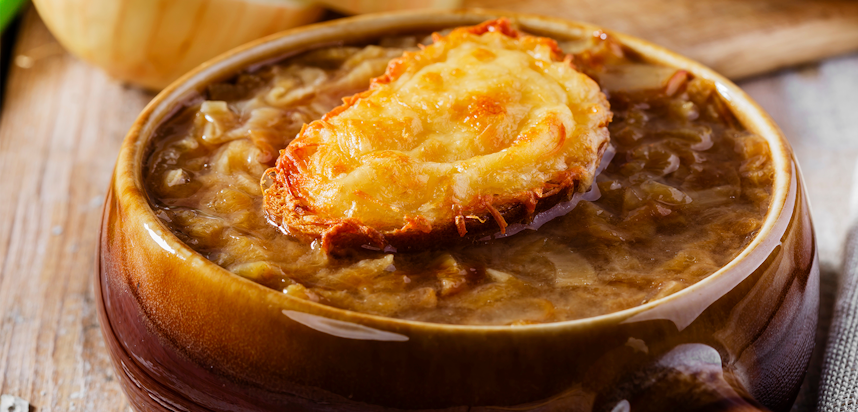
What is French onion soup
French onion soup is a dish consisting of fried or caramelised onions cooked in beef stock and covered with a crusty piece of bread topped with melted cheese or croutons. As the name suggests, French onion soup originated in France, though onion soups in general have been around since Roman times.
The recipe for French onions soup in the itineration we recognise today can be traced back to the mid-19th century and Les Halles, the large food and flower market in Paris - restaurants local to this location famously served their onion soup with a grilled cheese topping.
The cheese used for French onion soup is Gruyère, Comté or Emmental, and many recipes also include the addition of white wine or brandy to the beef stock.
French onion soup top tip
Add a spoonful of Worcestershire sauce to each serving of soup - it will give the dish a kick.
Allergy alert!
French onion soup typically contains Milk (from butter and cheese), and Cereals containing Gluten (from flour).
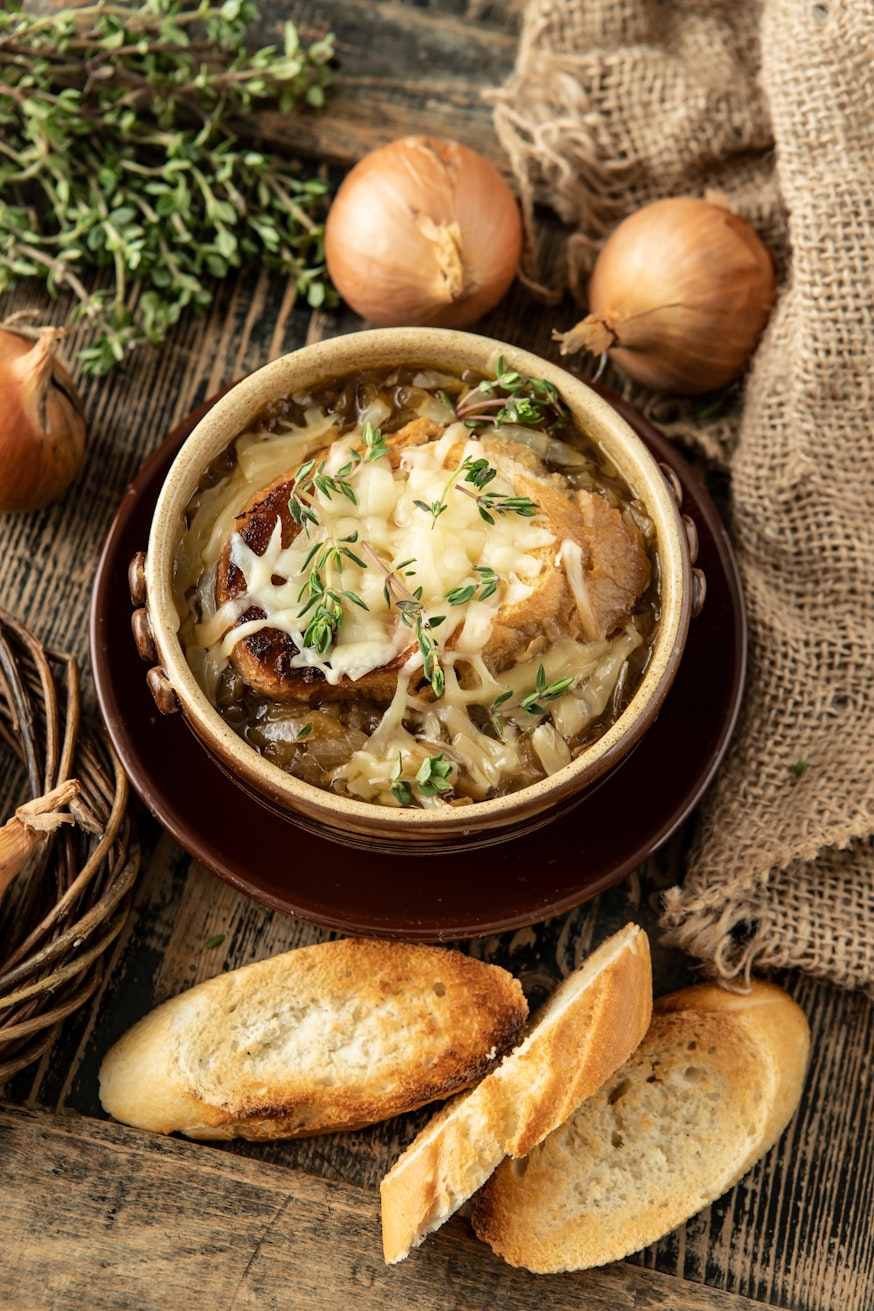
Dietary alternatives
Although beef or veal stock is traditionally used for French onion soup, this can be easily switched out for vegetable stock to make the dish vegetarian.
Those with Coeliac Disease or a gluten allergy/intolerance can either use gluten-free bread or a cheesy potato cake to top the soup, and for a low-calorie version forgo the bread entirely and instead just give the soup a generous grating of cheese and stick under the grill.
Steak & ale pie
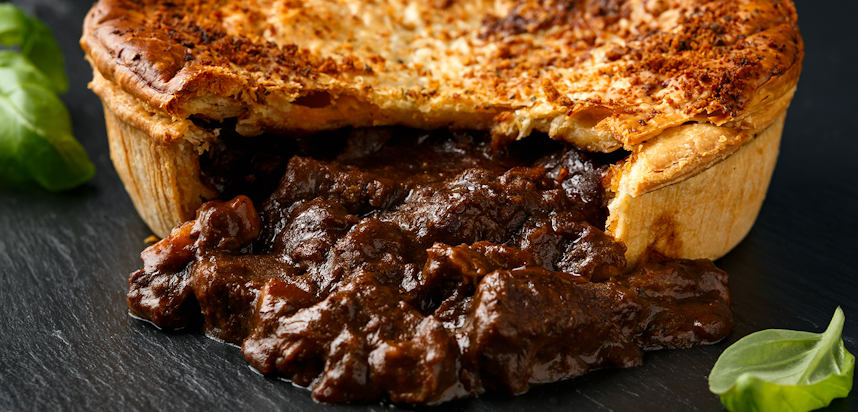
What is steak & ale pie?
Steak & ale pie is a classic British dish in which pieces of stewing steak are braised and stewed in ale alongside vegetables such as onions, carrots and peas to create a moist, gravy-rich filling which is then encased in a flaky pastry shell.
Often herbs such as tarragon, bay leaves and thyme are used to infuse the steak and vegetable mixture, and a dark brown British ale is generally preferred for its rich but not overpowering flavour.
Pies are a staple of pub menus, with other classic ingredient combinations including chicken and leek, cheese and onion, steak and kidney and chicken and mushroom.
Steak & ale pie top tip
Steak & ale pie traditionally uses flaky pastry, which should be light and crispy. To ensure this texture on the bottom of the pie as well as the top (not to mention prevent a raw, soggy bottom that collapses under the weight of the filling) you need to employ the technique blind baking. This means pre-baking the bottom crust in the pie dish - without any filling but weighed down with dried beans. Once it's crispy the filling and top can be added and returned to the oven.
Allergy alert!
The pastry used for steak & ale pie will likely contain several allergen ingredients such as Milk (in the butter), Cereals containing Gluten (in the flour) and Eggs.
Some recipes may also contain Mustard powder. The filling of the pie will also likely include flour among the ingredients, and possibly allergen ingredients such as Celery. Additionally, there may also be Sulphur Dioxide from the ale.
Dietary alternatives
To make the pie vegetarian, swap out steak for shitake or portobello mushrooms - they have a deep flavour and meaty texture, and change beef stock for vegetable stock.
For other animal-derived ingredients such as Milk, Butter and Egg you can find substitutes here to make the entire pie suitable for vegans. Those following a gluten-free diet can use one of the many gluten-free flours on the market for both the pastry and pie filling.
Salmnon fishcakes
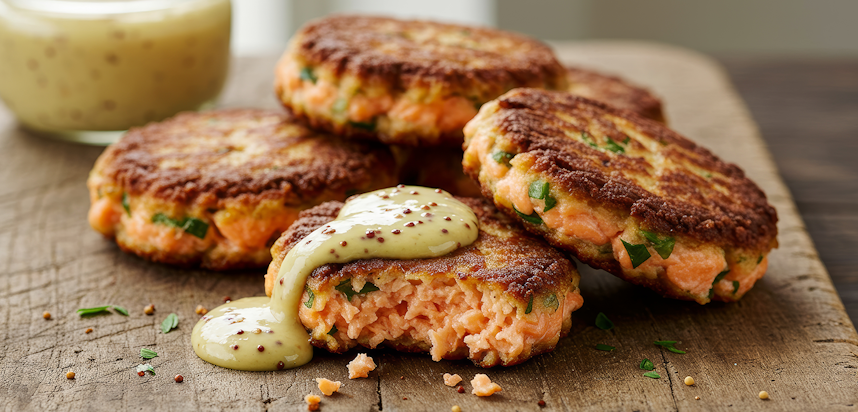
What are salmon fishcakes?
Salmon fishcakes are a hearty English dish consisting of flaky salmon mixed with ingredients such as mashed potatoes, dill, flour, mustard and parsley and shaped into patties before being brushed with egg and fried.
Sometimes the cakes have a breadcrumb or batter coating, and they are traditionally served in pairs alongside salad and a lemon garnish.
Fishcakes have been popular in UK cuisine since at least the mid-19th century, as a recipe is included in 1861’s famous Book of Household Management by Mrs Beeton.
Salmon fishcakes top tip
Use tinned salmon for the fishcakes rather than fresh salmon - tinned fish combines more easily and effectively with other ingredients.
Allergy alert!
Salmon is a Fish and therefore a major food allergen. Most recipes will also include the allergens Egg and wheat flour breadcrumbs. Some recipes may include Mustard too.
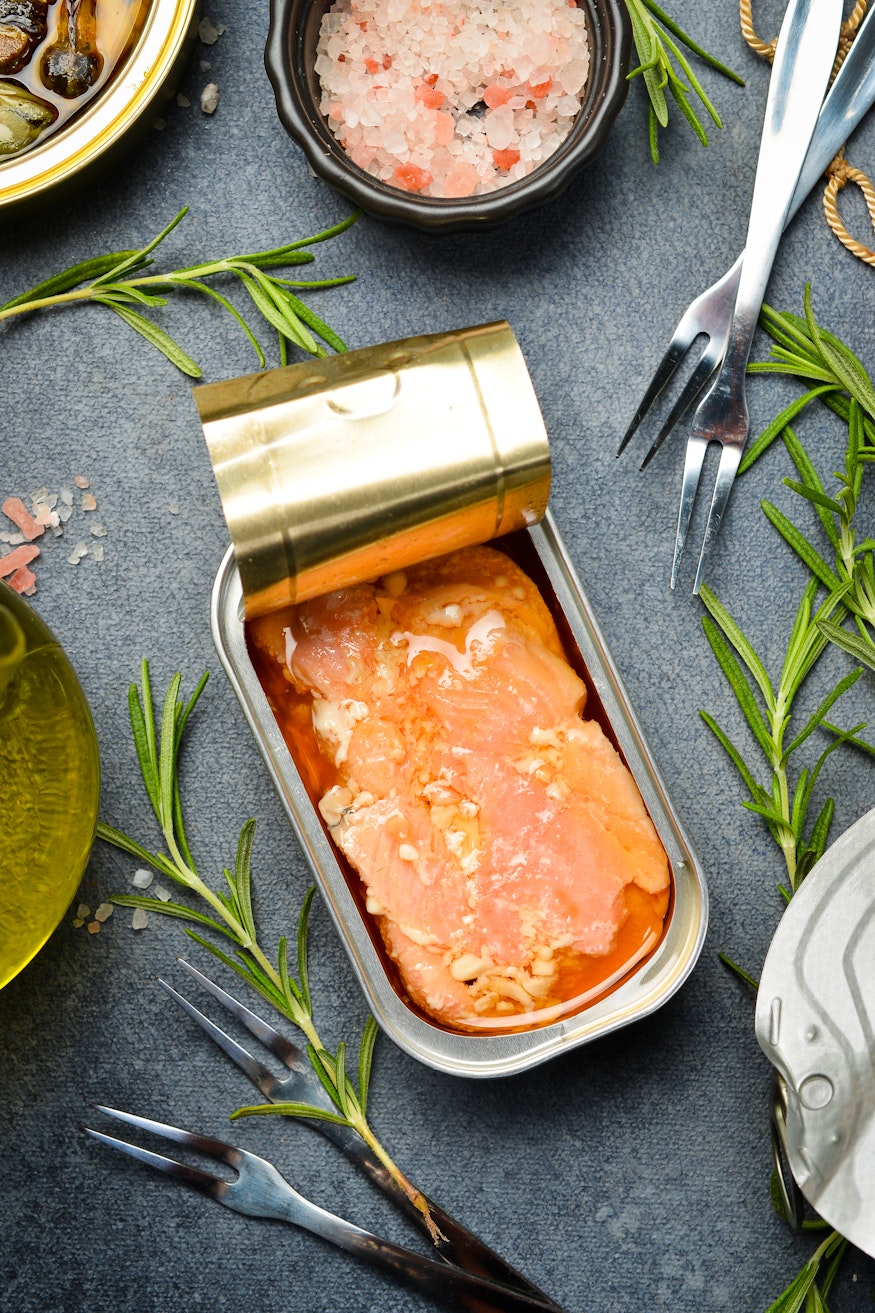
Dietary alternatives
Chickpea flour can be used for those with a gluten allergy or Coeliac disease in place of wheat flour, and whilst salmon is the star ingredient of this dish, capers and seaweed can provide a similar tang and “fishy” taste for a potato cake suitable for vegans and vegetarians.
Fish finger sandwiches
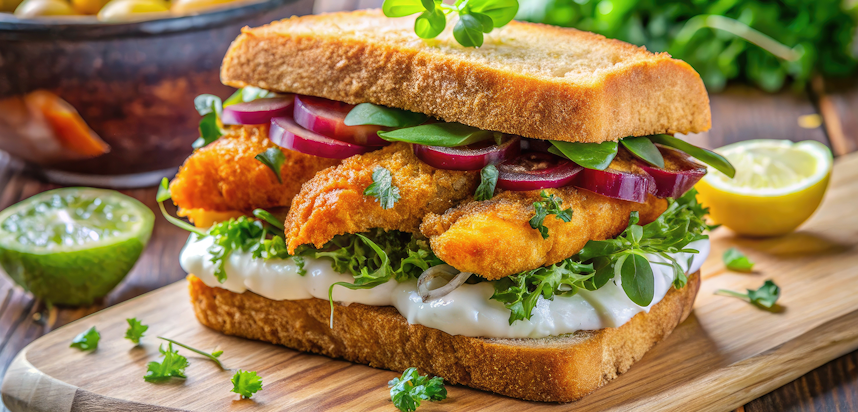
What is a fishfinger sandwich?
A fishfinger sandwich is a British dish particularly associated with pub grub and comfort food, made by placing 2-3 fishfingers between 2 slices of crusty white bread and adding other ingredients such as tartar sauce and rocket or lettuce.
Though it’s difficult to pinpoint the precise origin of the fishfinger sandwich, the fishfinger itself - strips of white fish coated in crispy breadcrumbs, has been a mainstay of national cuisine since it was invented by Mr Scott of Birds Eye in 1955.
Whilst tartar sauce, a mixture of mayonnaise, chopped gherkins, capers and dill, is the most common sauce for a fishfinger sandwich, some people prefer ketchup, mayonnaise or salad cream.
Fishfinger sandwich top tip
For an especially indulgent or “gourmet” fishfinger sandwich, fry the bread lightly in butter before assembling.
Allergy alert!
Fish is a major food allergen, as is wheat or rye flour (both Cereal containing Glutens) - which most bread is made from. Tartar sauce, a traditional accompaniment to fishfinger sandwiches, includes mayonnaise as a major component. Mayonnaise is made from Eggs, another major food allergen.
Dietary alternatives
For those with an Egg allergy or intolerance, the eggs in tartar sauce can be replaced with plain yoghurt (dairy-free yoghurt for vegans) - it will retain the sauce’s creamy texture.
Those who dislike or are allergic to Fish can opt for chicken strips - as a white meat it has the same delicate flavour profile as white fish.
Bangers & mash
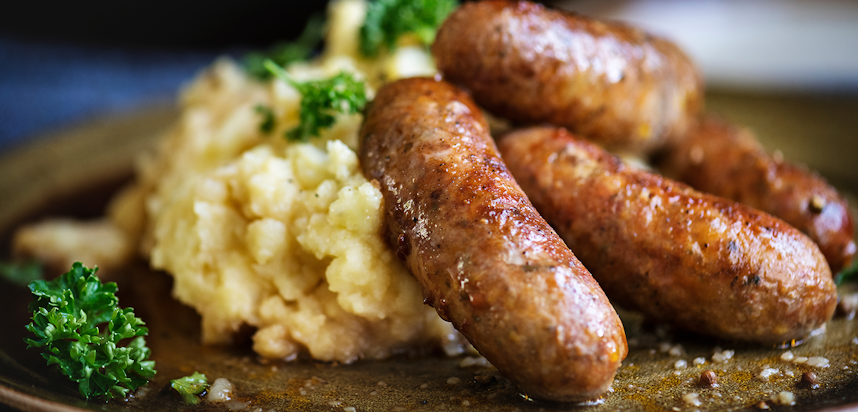
What is bangers & mash
Bangers a& mash is another name for sausages and mashed potato, a traditional English dish usually served with onion gravy and peas.
The word “banger” for sausage dates back at least as far as 1919, and for this meal Cumberland sausages - notable for their coarse texture (achieved by chopping rather than mincing the pork inside) are the traditional choice. For the potatoes, a starchy variety such as Maris Piper make the best mash, which is made by par boiling chopped potatoes and then draining before mashing or blending them with butter and/or milk.
Bangers & mash top tip
Add a generous dollop of sour cream to the mashed potatoes for a flavour that will pair beautifully with meaty sausages and tangy onion gravy.
Allergy alert!
Most sausages will contain some breadcrumbs - meaning they likely contain wheat, or another Cereal containing Gluten.
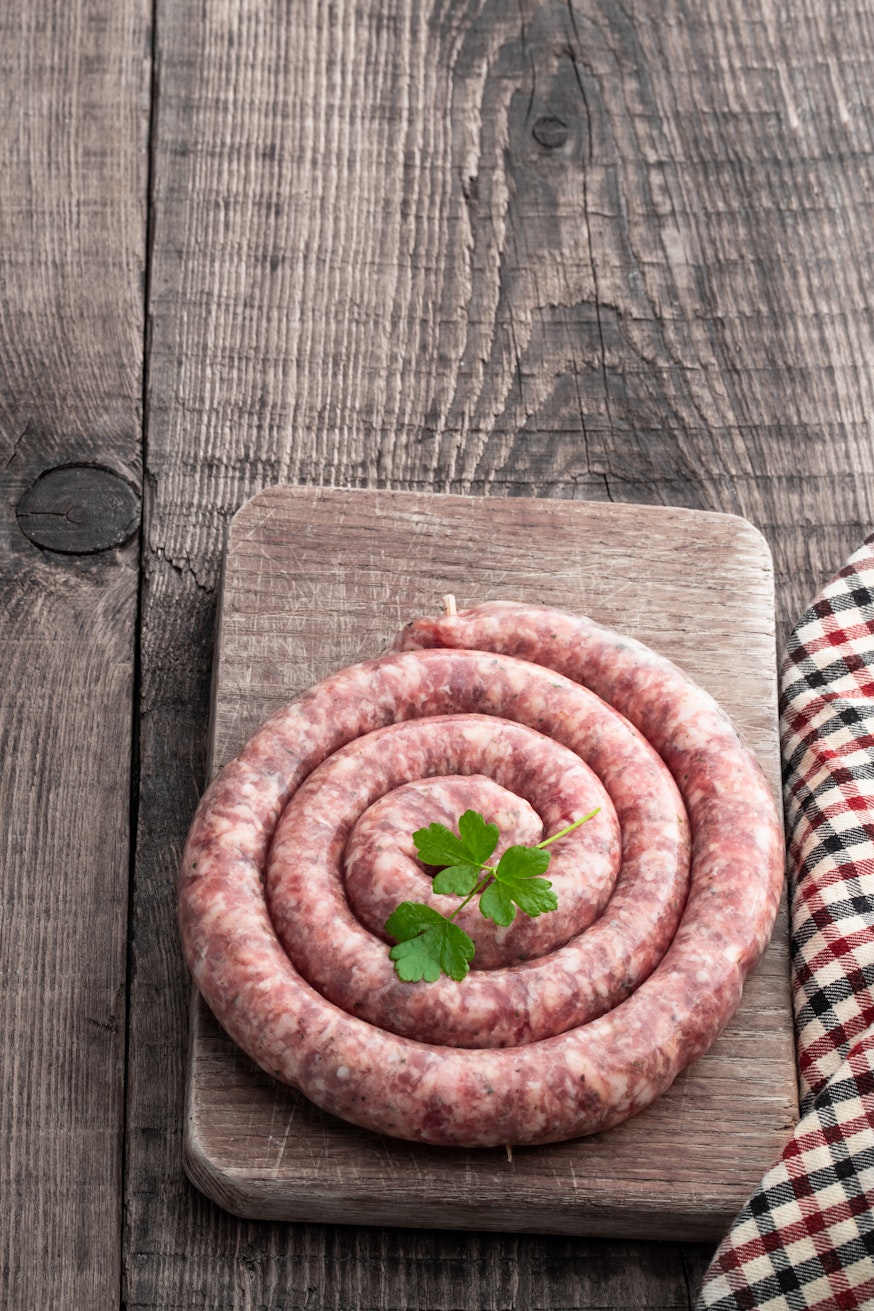
Most mash will have butter or Milk added to the potatoes to add flavour.
Dietary alternatives
To make this dish suitable for plant-based diets meat sausages can be swapped for vegetarian or vegan sausages, and vegetable stock used for the onion gravy. For the potatoes add olive oil or margarine instead of butter and milk.
Pork pie
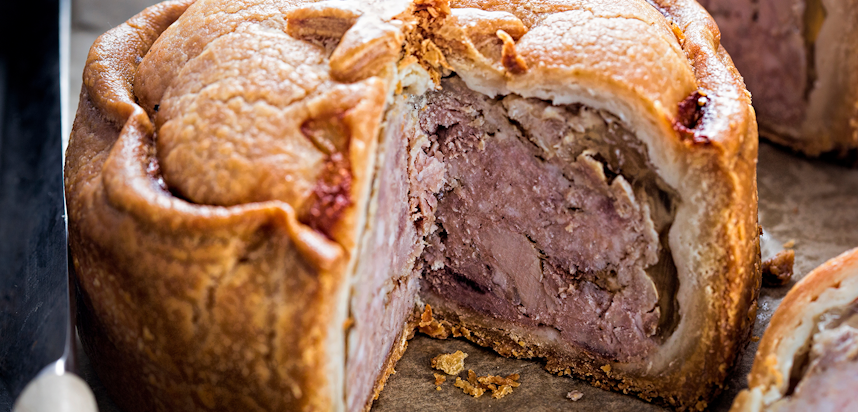
What is a pork pie?
A pork pie is one of the most famous English snacks - a meat pie consisting of a chopped pork centre surrounded by jellied pork stock and encased in hot water crust pastry.
Traditionally, the pie’s centre is a mixture of fat and cured pork meat, usually shoulder or belly, and the whole thing is shaped in a mould to give it a distinctive shape. Hot water crust pastry was used as it helps preserve the filling.
Pork pies are usually served alone, or alongside a light salad, and at room temperature or chilled - though in Yorkshire they are served hot.
Pork pie top tip
Bear in mind that the more you knead the dough the tougher it will become - hot water pastry is already very robust, so knead the pastry lightly and roll till smooth. And make sure the fat you use - whether lard or butter, is very cold and chopped into small pieces.
Allergy alert!
Though lard is usually the specified fat in a hot water pastry recipe, many people prefer to use butter - a Milk derivative. Wheat flour (Cereals containing Gluten),is another major allergen and another main ingredient. Egg wash is commonly used to finish the pastry.
Dietary alternatives
Pork pies in which the pastry is made with lard rather than butter are actually already dairy-free and suitable for those with a Milk allergy or lactose intolerance, but it’s a difficult dish to make suitable for vegans or vegetarians. To do so, try using a mushroom filling, vegetarian gelatin for the jelly layer, and olive oil spread for the pastry in place of lard or butter.
Shepherd's pie
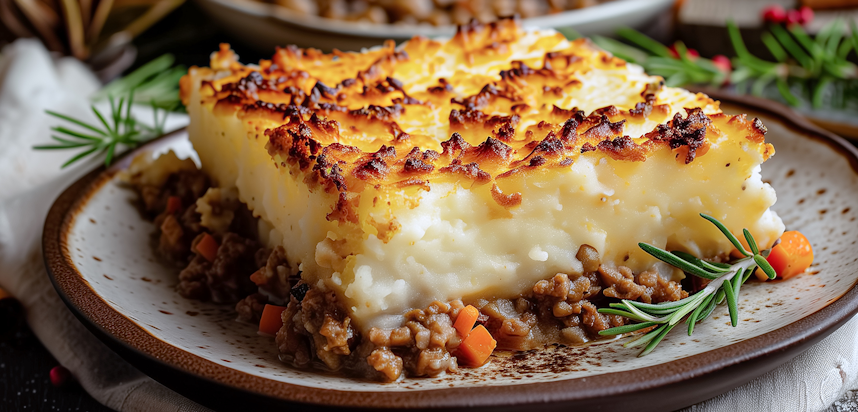
What is Shepherd's pie?
Often confused with ‘Cottage Pie’ - a very similar dish that uses beef instead of lamb, Shepherd’s Pie is a British culinary staple consisting of a layer of diced lamb, cooked with onions and carrots (and either a gravy or tomato based sauce), then topped with a mashed potato crust.
One of the first known recipes for Shepherd’s pie appeared in The Practice of Cookery and Pastry, published in Edinburgh in 1849 - though in this case the meat was not specifically lamb.
The dish is typically served with garden peas or petit pois.
Shepherd’s pie top tip
Add shallots to the meat layer mixture and its flavour will pack extra punch.
Allergy alert!
Of the 14 major food allergens, Shepherd’s Pie is most likely to include Milk, used to flavour the mashed potato. Some recipes will also include flour (Cereals containing Gluten) and Celery in the sauce.
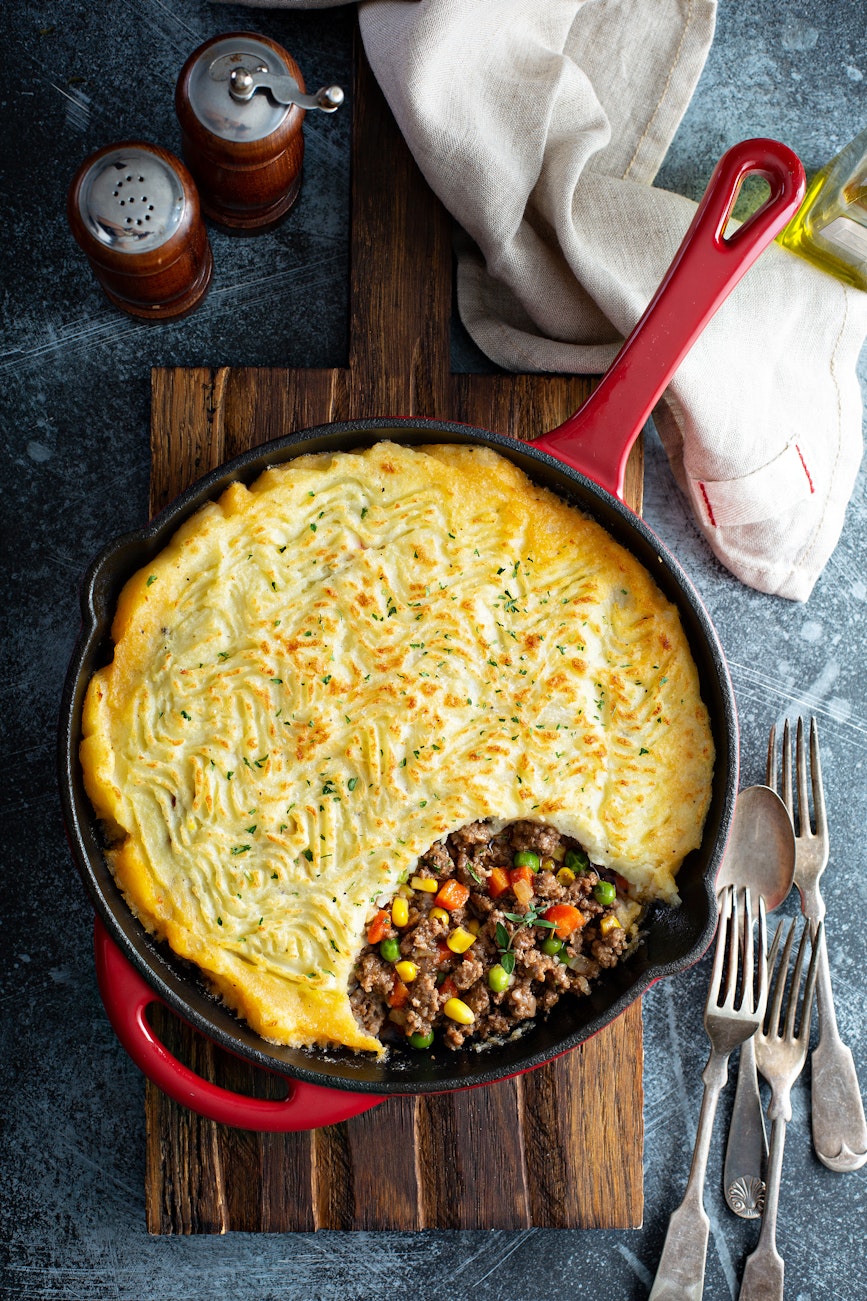
Dietary alternatives
Pulses such as chickpeas, beans or lentils make a great plant-based alternative to lamb, and so long as vegetable stock is used instead of beef stock or meat juice in the sauce, it’s a dish suitable for vegetarians, and vegans so long as there is no butter in the mashed potato.
Colcannon
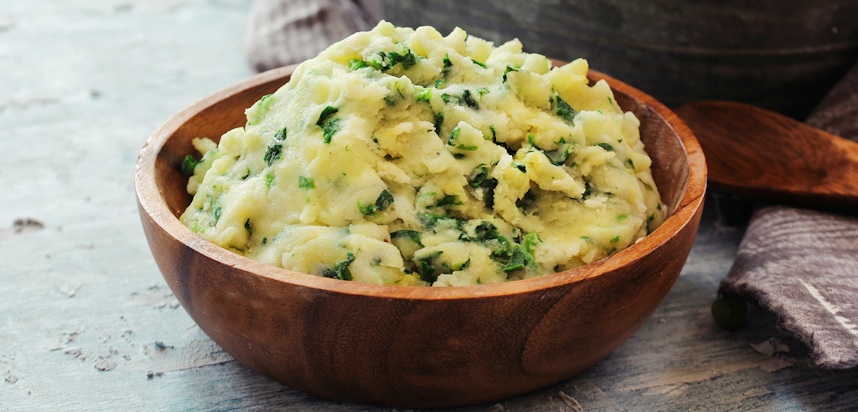
What is colcannon?
Colcannon is a classic Irish dish that in traditional recipes is made with only 4 ingredients - mashed potatoes, butter, milk and cabbage. It takes its name from the Irish cál ceannann, meaning 'white-headed cabbage', and it is made simply by heating and combining the ingredients till they are thoroughly blended.
Sometimes kale is used instead of cabbage, and though it makes a hearty meal in its own right, it is frequently served as a side dish to the likes of Irish stew or lamb chops.
Colcannon top tip
To add a sense of luxury and extra flavour, sautee the cabbage alongside lardons or chopped bacon, and then add to the potatoes, milk and butter once crispy.
Allergy alert!
2 of colcanno’s 4 ingredients are Milk and one of its derivatives, butter. Milk is one of the 14 major food allergens.
Dietary alternatives
To make this suitable for those following a vegan diet or those with a dairy-allergy, use a vegan butter and plant-based milk such as oat milk, coconut milk or almond milk.
